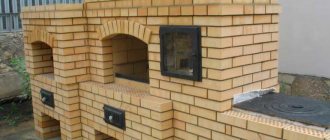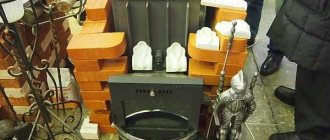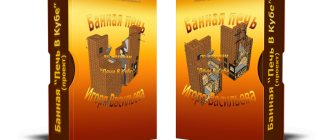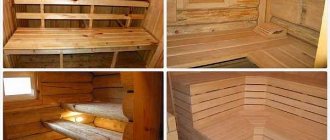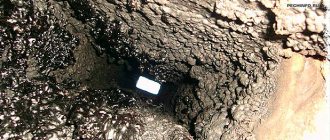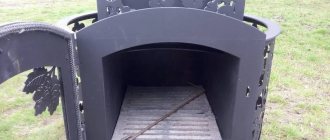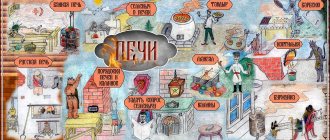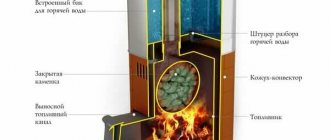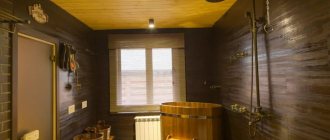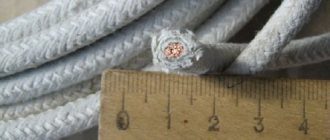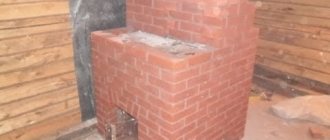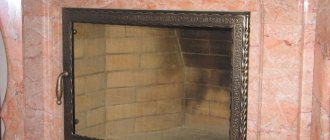Good fame sits behind the stove, but bad fame runs around the world (popular proverb).
Hello, dear readers!
Have you erected a steam room? Have you done the interior lining? Have you done the exterior cladding? So, it's time to start decorating the interior! What should you buy first? Right. First of all, you need to give the steam room a warm heart, in which tongues of life-giving flame will reverently blaze - a stove.
I think there will be no problems with purchasing a firebox for a bathhouse, since the modern market is replete with a colossal number of different models. Among them, every buyer, even the most demanding one, can find a stove that proudly demonstrates good technical characteristics.
Today no one bulges their eyes or opens their mouth when looking at this or that elite class model. However, people are extremely surprised by the availability of high-quality stoves in the economy segment. Of course, fireboxes with excellent characteristics exist, but their range is unusually meager. This injustice has an explanation: high labor intensity and the use of first-class materials.
Therefore, it is simply not profitable for organizations specializing in the production of sauna stoves to produce economy-class models. But some companies still managed to solve a difficult problem and please customers with devices that have an optimal price-quality ratio.
How to clean a barbarian stove
Even a perfectly built stove and chimney will begin to need cleaning over time. In this particular case, the quality of its manufacture will directly affect the intensity and frequency of this process. If we consider that the owners themselves can further contribute to the contamination of the chimney, it becomes obvious that it will have to be cleaned at least once a year. How to clean soot from the stove, what signs indicate the need for this?
When should you clean your stove?
You will have to clean the soot from the stove just before the start of the heating season. The following signs may also indicate that such a need really exists:
1) Smoke color. It is a clear indicator of the cleanliness of the chimney and stove. If black smoke comes out of the pipe, it means that the channels are full of soot and you should immediately begin cleaning the system.
2) The color of the burning flame. Another indicator indicating that the chimney pipes are full of soot. The ideal flame is one that has a light shade of orange. If the fire takes on dark tones, this indicates a lack of draft in the system.
3) Poor traction. A decrease in draft, which leads to the fact that the stove or fireplace begins to smoke or is difficult to melt even with dry wood, is soot accumulated on the walls of the chimney. Accumulating over time, it reduces the diameter of the chimney opening, and the draft decreases accordingly.
Significant accumulations of soot in the chimney can ignite due to high temperatures inside the furnace. When the soot burns, sparks will fly from the chimney, which can cause a fire. In addition, insufficient draft can lead to carbon monoxide accumulating in the room, resulting in carbon monoxide poisoning.
You should not use cellophane, plastic bottles, or light a fire with liquid fuel for heating. Our ancestors also believed that it was extremely wrong to heat a stove with leftover food, damp firewood or garbage. This contributes to the accelerated appearance of soot in the pipes, which in turn leads to the appearance of condensation, which destroys the chimney.
You will have to clean the chimney every time these alarming symptoms are observed; you should also pay attention to the unexplained loss of smoke draft; this can also occur due to contamination of the channels.
How to clean the stove?
There are both folk methods of how to get rid of soot in a furnace, and more scientifically based ones. Surprisingly, both are effective almost equally. To do this, you can use the following options:
● The easiest and most accessible way for everyone is to use rock salt. During the burning of wood, it is thrown into the oven. True, this method is more effective for preventive measures against soot formation.
● Potato peelings. You will need about 1 - 1.5 buckets of this fuel. They are burned with wood. The starch released during the combustion process helps burn soot. It is recommended to use this method only as a preventive measure. Burning them in a furnace leads to the fact that soot begins to fall directly into the furnace. After burning, you just need to clean the firebox and channels through the cleaning hole. Potato peels should be placed on already lit firewood. You should not suffer and heat the stove by cleaning separately. Their use is effective when heating the furnace.
● Cleaning log. A special chemical composition helps burn out soot from pipes without the use of mechanical cleaning. The disadvantage of this method is the high temperature at which the “log” burns out. Some chimneys cannot withstand such intensity and can burn out along with the soot. Cleaning soot in the stove in this way is also not recommended if the owners have any allergic reactions to odors. After the combustion of substances, the aroma of the chemicals used will remain in the house for some time.
● Mechanical method. The most proven cleaning method. For it you need to purchase a special brush with a weight attached to the end. It is slowly lowered into the chimney channel. After this, the fallen soot is removed using special inspection windows. This method is usually the most productive, but it requires sufficient practice and experience to use it.
● You can clean the chimney of soot using aspen firewood. Experts recommend burning them in large quantities. Cleaning with this method means that at high temperatures, the soot begins to burn and burns out. Needless to say, this method is extremely unsafe. After all, sparks flying from the chimney can land not only on the roof, but also on nearby buildings. Another disadvantage of this method is that the temperature in the chimney is too high. There is a high probability that it simply will not withstand such a load and will crack. So before you put this option into practice, think carefully about whether it’s worth it.
● Powdered PHC product, it is burned without removing it from the packaging, both with firewood and separately. It is imperative to take into account the standards for the use of preventative agents. PHC can be burned in an amount of 200 grams per ton of fuel.
Before cleaning the furnace chimney from accumulated soot, you need to make sure that there is no bird's nest in it. To do this, a pole is inserted into the pipe and, when a nest is detected, it is pushed to the inspection holes and removed from the chimney.
Of course, you can do all the work on cleaning chimney ducts yourself, but first it would be good to consult with a specialist. It is correct that the stove maker monitors all stages of the work being performed for the first time. It is also worth taking care of the correct operation of the furnace, which significantly reduces the frequency with which such maintenance must be carried out.
In recent years, the popularity of domestic sauna stoves has increased - Russian-made models provide worthy competition to foreign products. And this is not surprising. For example, the Varvara sauna stove is increasingly being installed in steam rooms for the simple reason that it quickly and efficiently heats the room, provides those steaming with a sufficient amount of steam, and fits perfectly into even the smallest baths.
Varvara heat generators are manufactured by the Tver company DERO and K LLC. The model range is small (only nine models), but each buyer will be able to choose the most suitable option. Thus, people often prefer to buy devices that provide remote heating of water for washing, and only benefit from this.
Design and manufacturer features
One of these manufacturers is a Russian organization that has been manufacturing stoves for no less than 10 years. The economy segment is represented by options under the Varvara brand. They fit perfectly into miniature steam rooms, giving the interior a wonderful touch. They warm up the health resort with lightning speed and caress the bathhouse gourmets with gentle steam! The “Varvara” sauna stove has been held in high regard by many steam gourmets for a relatively long time!
class=”aligncenter” width=”480″ height=”603″[/img]
Varvara stoves are the brainchild of the Tver manufacturer DERO and K. It specializes in the production and sale of metal stoves, which are intended for use in saunas and baths. During its presence on the furnace equipment market, the products have acquired a lot of admirers, since they are of excellent quality, despite the fact that the price is not astronomical.
To earn such a brilliant reputation, the company has done a lot of work, but achieved the desired result. How? The secret of success is your own skills + knowledge of world leaders + wishes of clients.
In addition, innovative techniques, high-tech units and first-class materials are used to manufacture products. Each production stage is strictly controlled by qualified personnel: from the selection of raw materials to the packaging of goods. What does this mean? The presence of defective or low-quality goods is practically excluded.
In addition, all products undergo strict testing to ensure they comply with European quality standards.
Thus, fireboxes that proudly bear the truly Russian name “Varvara” are a profitable investment, as evidenced by many reviews from steam lovers.
Design
The “inner world” of stoves is simple. They consist of the following parts:
- furnaces - intended for burning organic fuel to produce heat;
- afterburner chambers – responsible for the combustion of gases;
- ash pan - intended to regulate the intensity of firewood combustion and remove soot;
- chimney system - responsible for removing combustion products;
- heaters – ensures uniform heating of stones;
- convector – helps to heat the air in the steam room.
A design feature, a certain “zest”, of the “Varvara” stoves is the presence of an inspection hole, which is located on the back side. What is her secret? The hole is intended to clean the combustion and afterburning chambers from ash and soot that accumulate during operation of the device.
The design of cheap Varvara stoves is similar to the structure of expensive models. Is their creator really a good wizard working at a loss? No. The organization just got a good specialist. He suggested producing heaters with minimal equipment. Thanks to this we managed to significantly reduce the price. Thus, the company produces devices with limited functionality. But if you wish, you can purchase certain stove accessories and install them.
Strengths and weaknesses of Varvara stoves
The main advantage of all representatives of this model range is their low weight: about 100 kg plus the mass of the chimney pipe. Such a stove can support any floor, so it does not require a particularly strong base - in most cases, high-quality insulation alone is sufficient.
Furnace Varvara Terma Skazka
On a note! If desired, the stove after purchase can be equipped with a glass door, a tank for heating water, a mirror thermal casing, or even a shortened combustion chamber. The location of the container can be different: top, bottom or side; You can do without a container at all if you already have a water heater.
Another advantage of the described models is the presence of a round hole (it is closed with a special plug) on the back wall of the case, which is intended for cleaning. The user can see the place that needs cleaning even with the naked eye: you just need to look inside the combustion chamber and find a welded metal sheet (also called a “smoke tooth”) - it is on it that soot accumulates.
Installation diagram of the “Varvara” stove for baths and saunas with an overhead tank of 120 l
Sectional view of the Varvara stove
It is worth noting that Varvara stoves require periodic maintenance - the chimney and afterburner need to be cleaned twice a year. But that's where all the troubles end.
Review of the Varvara line
According to the manufacturer himself, Varvara stoves began to be produced for baths only after all the advantages and disadvantages of popular Russian models were carefully analyzed. For this reason, the strengths and weaknesses of competing devices are taken into account here.
The model range itself, as noted above, consists of seven models. Let's get acquainted with the features and characteristics of each of them.
Model Varvara “Fairy Tale”
A successful combination of high-quality convection/accumulation and attractive design. This model is capable of warming up the steam room in record time and keeping it warm for quite a long time.
The “Varvara Skazka” sauna stove is lined with soapstone
Other features of "Fairy Tales".
- The top part and side walls are made of a special stone - soapstone.
- The panoramic screen, made of heat-resistant glass, makes it possible to enjoy the playing flames.
- The design of the model is minimalist, but it still looks impressive.
More detailed characteristics of the model are given below. For user convenience, the information is presented in table form.
Table No. 1. Technical parameters of the Varvara “Fairy Tale” model
Recognized advantages and disappointing disadvantages
Of course, devices have advantages and disadvantages.
The stoves proudly demonstrate the following positive aspects:
- durability;
- wear resistance;
- aesthetics;
- ergonomics;
- efficiency;
- efficiency;
- compactness;
- availability;
- safety;
- light weight;
- simple installation;
- easy care;
- presence of “revision”;
- lightning-fast heating;
- low price.
The devices are great for tiny baths and larger steam rooms.
But, alas, there are also disadvantages. Tver stoves have the following negative aspects:
- long combustion process, which promotes the formation of dew;
- low rate of heating of the liquid in the container;
- installation involves finishing work; neglect can lead to a decrease in the thermal efficiency of the structure;
- the use of birch firewood leads to cracking of the frame.
I want to say something in defense of the beautiful girls of “Barbarian”. The second minus easily turns into a plus when an additional heat exchanger is fixed on the chimney. The result is that the liquid heats up to 70°C within an hour. And the first problem arises only when the pipe is installed “through smoke” and not “through condensate.”
The third negative point turns into a positive one if you calculate all the costs. Purchasing a stove that does not require cladding will cost much more than purchasing a “Varvara” firebox and finishing material combined. In addition, the brick decoration of the firebox will give the interior an exclusive touch. And, finally, the fourth problem is solved by refusing to purchase birch firewood, which, by the way, is more expensive than other types of firewood for the “Barbarian” young ladies.
Bath stove Varvara
In recent years, the popularity of domestic sauna stoves has increased - Russian-made models provide worthy competition to foreign products. And this is not surprising. For example, the Varvara sauna stove is increasingly being installed in steam rooms for the simple reason that it quickly and efficiently heats the room, provides those steaming with a sufficient amount of steam, and fits perfectly into even the smallest baths.
Bath stove Varvara
Varvara heat generators are manufactured by the Tver company DERO and K LLC. The model range is small (only nine models), but each buyer will be able to choose the most suitable option. Thus, people often prefer to buy devices that provide remote heating of water for washing, and only benefit from this.
Strengths and weaknesses of Varvara stoves
The main advantage of all representatives of this model range is their low weight: about 100 kg plus the mass of the chimney pipe. Such a stove can support any floor, so it does not require a particularly strong base - in most cases, high-quality insulation alone is sufficient.
Furnace Varvara Terma Skazka
On a note! If desired, the stove after purchase can be equipped with a glass door, a tank for heating water, a mirror thermal casing, or even a shortened combustion chamber. The location of the container can be different: top, bottom or side; You can do without a container at all if you already have a water heater.
Another advantage of the described models is the presence of a round hole (it is closed with a special plug) on the back wall of the case, which is intended for cleaning. The user can see the place that needs cleaning even with the naked eye: you just need to look inside the combustion chamber and find a welded metal sheet (also called a “smoke tooth”) - it is on it that soot accumulates.
Installation diagram of the “Varvara” stove for baths and saunas with an overhead tank of 120 l
Sectional view of the Varvara stove
It is worth noting that Varvara stoves require periodic maintenance - the chimney and afterburner need to be cleaned twice a year. But that's where all the troubles end.
Now - about the shortcomings. Sometimes users note that the water in the tank takes longer to heat up than in a conventional stove. This problem can be solved quite simply: an additional heat exchanger is installed on the chimney, as a result of which the water will heat up to 70°C within an hour, which is very good. Although after a few hours it may boil, so you will have to carefully monitor the heating.
Another difficulty that users of Varvara often encounter is condensation that flows down the chimney pipe. This happens if the pipe is installed “along the smoke”.
Assembling chimney elements
Assembly “by smoke” and “by condensate”
The problem is explained by the fact that Varvara is equipped with an afterburner chamber, which means it operates primarily in slow fire mode. Because of this, the temperature at the chimney outlet is not very high, which leads to abundant formation of condensate, often even with impurities. Therefore, correct installation of the stove is so important (the diagram will be given at the end of the article). It is also desirable that the pipe is not 120 cm, but passes through the entire tank, i.e., it is longer by as much as 50 cm.
Review of the Varvara line
According to the manufacturer himself, Varvara stoves began to be produced for baths only after all the advantages and disadvantages of popular Russian models were carefully analyzed. For this reason, the strengths and weaknesses of competing devices are taken into account here.
The model range itself, as noted above, consists of seven models. Let's get acquainted with the features and characteristics of each of them.
Model Varvara “Fairy Tale”
A successful combination of high-quality convection/accumulation and attractive design. This model is capable of warming up the steam room in record time and keeping it warm for quite a long time.
The “Varvara Skazka” sauna stove is lined with soapstone
Other features of "Fairy Tales".
- The top part and side walls are made of a special stone - soapstone.
- The panoramic screen, made of heat-resistant glass, makes it possible to enjoy the playing flames.
- The design of the model is minimalist, but it still looks impressive.
More detailed characteristics of the model are given below. For user convenience, the information is presented in table form.
Table No. 1. Technical parameters of the Varvara “Fairy Tale” model
stove Varvara
I installed a “Varvara” stove, the one they make in Tver, in the bathhouse. I chose the option with a water heating circuit and a tank on a pipe. During the first fire, I received an unpleasant surprise. The chimney passes through a water tank and, accordingly, the inner walls begin to sweat and condensation begins to flow down the rubble onto the stove, and everything would be fine if it were pure condensation from the air. But no, the design of the chimney is made in such a way that the outlet pipe from the stove does not pass through the entire tank, but only extends 15 centimeters into this tank and then the sweating walls of the tank serve as the chimney. The products of burning wood are mixed with the condensate, plus some of the moisture from the firewood condenses because they have their own humidity, and the result is a black sauna fire. I decided to extend the pipe so that it would go through the entire tank. I wrote all this to warn others against possible mistakes.
Leksey wrote: During the first fire, I received an unpleasant surprise. The chimney passes through a water tank and, accordingly, the inner walls begin to sweat and condensation begins to flow down the rubble onto the stove, and everything would be fine if it were pure condensation from the air.
Before lighting the stove, pour a little water into the tank on the pipe. As soon as the stove flares up, top up completely. IMHO
This problem with the tank and heat exchangers is always present; it is necessary to provide a cleaning device and clean it after about 2-4 fireboxes!
What can you say about the stove itself? How much money did you give? How is she doing? In the pictures that we were able to find, it seems that there are few stones, is that true? How long do you think it will last with weekly use? Did you cover it with bricks?
the oven is normal. Economical. I bought it in Tver in a store from the manufacturer for 16,000 rubles. I didn’t cover the walls with bricks, I covered them with sheets, I don’t remember the name, I think it’s mineralite. I carried out tests, heated it on a gas stove and put a chip on it, it did not char. I wanted to make a faucet with a shower like in an apartment, but the height of the column is not enough for the mixer to supply either hot or cold water. But still, condensate flowing down the pipe is not a problem until you get around to inserting a piece of pipe, but once I install it, I will definitely write about the effect.
Kinds
Currently, the company produces three types of heaters:
- a device with a tank on a pipe located at the top (volume 120 l);
- equipment without a water tank;
- a device with a water tank located on the side (volume 50 l).
The first type is perfect for baths that are connected to a central water supply. The second is good for saunas in which water is heated using an electric heater. And the third is great for steam rooms that are not connected to the central water supply.
The range of these sauna stoves
As he himself states, they began to produce baths after a thorough analysis of the pros and cons of domestic models - and therefore all the pros and cons of competitors are taken into account.
Any “Barbara” model creates a comfortable temperature and good steam in the bathhouse. There are three main serial “Barbarians”:
An oven with a heating circuit and a tank, which is located at the top and has a capacity of 120 liters.
These stoves are intended for those baths where there is a water supply or a pumping station with water supplied to it. Here the tank is essentially a passage through the ceiling. The steam from such a stove is discharged to the street through a steam outlet. And the heating circuit itself is made of stainless steel 1.5 mm thick, where hot water circulates. Such a stove can even handle a steam room up to 30 m3. By the way, if such a large tank is not needed, it can be replaced with a standard 60 liter one.
Stove with a side-mounted tank - 50 liters.
This model is ideal for baths where it is not possible to connect or organize water supply. But such a stove can be installed record-breakingly quickly and easily, is easy to maintain and serves for a long time and without problems due to its simplicity.
A stove without a tank - with and without a circuit.
Furnaces with a circuit are designed for heating water using electric and gas water heaters. But “Barbarians” without a circuit are used more like a solid fuel boiler, which is connected to the radiators of the bathhouse and thus heats it.
"Mini"
A miniature but extremely efficient stove, it is ideal for small-sized bathhouses, for example, like here...
Its characteristic features:
- double convection;
- several configuration options;
- compactness.
The technical characteristics of the baby are as follows:
- linear dimensions – 62x39x73.5 cm;
- weight – 78 kg;
- power – 8 kW;
- fuel type - firewood;
- firebox length – 54 cm;
- steam room volume – up to 16 m3;
- heating time – 1 hour.
The price of a miniature device is from 10,000 rubles.
Advantages and disadvantages of Varvara
One of the important advantages of the Varvara sauna stoves is that they don’t weigh much at all: the stove itself weighs 100 kg and, in addition, the pipe for it. Absolutely any floor in a bathhouse will support such a weight, and therefore there is no need for a particularly powerful foundation for the stove - sometimes you can get by with just good insulation.
What’s simply wonderful is that the “Varvara” sauna stove has a round hole with a plug on the back wall - specifically for cleaning. And the place that needs to be cleaned at this stove can be easily seen with the naked eye: we look inside the firebox and see a welded sheet of metal in its upper part (it is also called a “smoke tooth”) - this is where all the settled soot accumulates. Yes, the Varvara stove requires maintenance - clean the pipe and afterburner twice a year. That's all the trouble!
Sometimes these stoves are not popular because the water in the tank takes longer to heat up than in conventional stoves. But it’s easy to solve this problem: we install an additional heat exchanger on the chimney, and within an hour the water will be about 70˚C, which is quite enough. True, after three hours it may boil - you will have to watch this.
Another common problem that owners of the Varvara sauna stove often encounter is condensate flowing down the pipe. This happens if the chimney was assembled “by smoke”. The thing is that “Varvara” is a stove with an afterburning chamber, and it works mainly in a slow burning mode. Therefore, the temperature at the chimney outlet turns out to be low, and condensate is formed quite generously, and even with impurities
That is why it is so important to install “Varvara” according to the correct scheme - it can be seen in the step-by-step photo below. And also make the pipe itself not 1.2 meters long, but one that passes through the entire tank - longer by as much as half a meter
This way the condensate will drain clean and will not come into contact with stove smoke.
It is also undesirable to heat this stove with birch wood - there have been cases when the seams of the stove simply came apart.
What will you need at work?
You can weld a sauna stove with your own hands only if you have the appropriate tools and materials.
The master will need:
- welding machine and electrodes for welding (size 3 or 4 mm);
- a grinder, which is used to make blanks for the stove;
- Sander;
- the metal from which the stove is made (most often stainless steel).
Steel pipes are also used and are purchased ready-made.
To make a sauna stove with your own hands, you will need a welding machine.
Stoves for baths “Varvara”: review and reviews
Domestic manufacturers are occupying an increasingly strong position in the market for bath stoves. Their products do not always have an attractive design, but the quality of the units and their properties are often at their best. One of these. This company began producing bath stoves 10 years ago, having previously studied the experience of leading and domestic manufacturers. As a result, “Varvara” bath stoves are in stable demand and have almost no complaints about quality.
Furnace structure using the example of the Varvara Classic model
Kamenka
It is obvious that a self-respecting company is simply not able to ignore a stove that is traditional in all respects. The design feature is the use of 6 mm steel, this factor significantly extends its service life.
An important aspect is the significant mass of stones (at least 180 kg can be placed in the heater). This ensures their maximum contact with the heated furnace body over an area of about 1.3 sq.m. The cost of such a stove is within 20 thousand rubles.
Advantages of Varvara stoves
One of the biggest advantages is its relatively low weight. Even the largest stove of this brand weighs no more than 120 kilograms (without water, fuel and stones). Almost any floor can support this weight, but if you want to cover the stove with a screen to create softer steam, you will still have to strengthen the foundation for the stove, or provide for it at the planning stage.
On the back wall of the Varvara stoves, the designers provided a special window covered with a lid, which makes it easier to care for. Inside, in the firebox, a special sheet (smoke tooth) is welded, on which soot accumulates. This is the afterburner chamber and needs to be cleaned about twice a year. That's all care.
The advantages of Varvara bath stoves include the possibility of completing
Bath stove “Varvara” equipped with a remote tank
remote or mounted tank of decent volumes:
- The stainless steel remote tank, which can be installed on the second floor or used as a penetration through the ceiling, can be 120 or 60 liters in volume. Moreover, the manufacturer claims that thanks to the stainless steel heating circuit in the tank, which improves water circulation and increases heat transfer, the water in the tank will boil within an hour.
- The hanging stainless steel tank has a volume of 50 liters. With this configuration, the stoves are easy to install.
The advantages of these stoves include the fact that the models are being improved and refined. So, at the beginning of 2013, all models have a unified chimney - 114 mm, and since August, changes have been made to the design of the stoves: there are fewer seams in it. In two places, welds were replaced with bends, which greatly increased the reliability of the units. Varvara stoves have an afterburning chamber, which increases efficiency. The arched arch of the combustion chamber allows for uniform heating of all zones and better air circulation.
All Varvara stoves are equipped with an external fuel chamber, i.e. fuel is added from the dressing room. If desired, the door can be ordered with fire-resistant glass and you can admire the play of the flame.
Step-by-step instructions for creating a stove with a tank
Many people believe that homemade designs cannot be compared with a heater produced in an industrial environment. In terms of their performance characteristics, such ovens are not inferior to ready-made ones. And if the master is willing to show a little patience, then the design of the product will be attractive.
An easy way for beginners
Novice craftsmen are often interested in how to make a sauna stove with their own hands from an old gas cylinder. This method is considered the simplest.
You can create a stove from an old gas cylinder.
Stages of work:
- Prepare the balloon. Unscrew the valve and fill it with water, which will displace the remaining gas (propane).
- Using a grinder, cut off the cylinder cap along the factory seam.
- Make holes in the lid so that you can install the doors of the firebox and ash pan. Make slots in the body for a pipe with a diameter of 100-150 mm. The pipe is necessary to connect the unit to the chimney.
- Weld structures made of metal strips onto the door openings.
- Install the corners inside the cylinder and attach the grate to them.
- Weld the lid of the product to the end.
- Provide the manufactured doors with locks and hinges and install them in place.
- Weld the legs to the cylinder (this type of stove does not have a foundation; it is placed directly on the floor) and attach the chimney pipe.
Before using it for its intended purpose, the sauna stove is heated to the outside. This is done in order to burn off any remaining paint. Then the owner can degrease the surface of the cylinder and cover it with heat-resistant paint.
When there is no electric water heater (boiler) in the bathhouse, in addition to such a stove, a tank for heating water is welded using stainless steel. To ensure heating of the liquid, a chimney is passed through such a tank or the tank is placed separately, connecting it with pipes to a heat exchanger. The latter is mounted on the chimney.
Complex design
An experienced craftsman can also use a device of complex design:
- Using a grinder, blanks are made from metal for the future walls of the product.
- The bottom of the stove is laid out so that it lies on a flat base. Then they begin to fix the walls, starting with the side ones. The correct location of each is checked with a square. Then fix the back wall. Then you can weld the seams around the perimeter. A good weld should be as neat as possible.
- Partitions are installed inside, which help to divide the space into the firebox itself, the ash compartment, etc. A metal corner is used to fix the partitions.
- Holes are made in the blanks for the partition and front part. The grate bars are welded to the inner partition, and the door is attached to the front partition. Afterwards, the front side is welded to the structure.
- The craftsman needs to install the pipe into a hole made in advance for it in the roof and fix it at the base by welding.
- Protective doors should be made and fixing elements should be used for this.
- At the last stage, the legs are welded to the body. For their manufacture, a metal corner up to 12 cm long is used.
The model can be equipped with a water tank. It is recommended to install it on the back of the case. Special stones are placed on top of the combustion chamber. The result is a stove that is not inferior in quality to the factory one.
Flaws
The disadvantages of Varvara stoves include perhaps not the most attractive appearance. If you plan to cover the stove with a screen (and this is the most reasonable solution), then the appearance should not bother you, and there are almost no complaints about the quality of these stoves. Although there is a “Fairy Tale” stove, which is lined with soapstone. This model cannot be called unattractive.
The stove for the Varvara Skazka bathhouse is lined with soapstone
The lineup
Models “Classic” and “Polenitsa”
The stoves have similar characteristics:
- Weight 90-120 kg;
- The maximum volume of the steam room is 24 m 3 ;
- Weight of stones – 50 kg;
- Fuel - firewood;
- Air heating from 20 o C to 100 o C in 60 minutes.
Drawing of the Varvara Classic stove.
Both can be equipped with a remote tank, which is connected to the existing water supply system (it is possible to fill the tank if there is a pump). This modification allows you to organize a shower - you will need to install a mixer. These models are also available with a water heating circuit made of 1.5 mm thick stainless steel. In this case, the stove can be connected to the heating system and used to heat rooms.
Models without water heater circuits are rational to use if water is heated in boilers. It is also possible to equip the stove with a hanging tank.
"Varvara Classic" with a hanging water tank
It is convenient to use a hanging tank in cases where water is not supplied to the bathhouse. The hinged tank can always be removed and washed, because it is no secret that plaque will form on the inner surface of the tank.
“Varvara Palenitsa” has slightly smaller dimensions than “Varvara Classic”.
Drawing of the Varvara Palenica stove
Externally, “Varvara Palenica” differs little from “Varvara Classic”.
Heater models
The two Varvara Kamenka models differ in the location and weight of stones and dimensions.
- Dimensions (HxWxD): 780x560x780 mm
- Weight: no more than 90-120 kg.
- Weight of laid stones: not less than 180 kg.
- Maximum volume of steam room: 24 m 3
- Heating time of the steam room from 20 0C to 100 0C (provided proper thermal insulation): 60 minutes.
- Combustion chamber offset: 140 mm
- Chimney diameter: 114 mm
- Power: 12 kW
- Heat-resistant glass (WxD): 305×290 mm
- Fuel: wood
“Varvara Kamenka” with glass and cast iron door
The smaller “Kamenka mini” is designed for rooms up to 16m 3, the larger one can heat up to 24m 3.
Sauna stove “Varvara Kamenka Mini”
Both ovens are equipped with a door with panoramic heat-resistant glass.
"Mini" and "Panorama"
The Varvara Mini stove has small dimensions of 735 x 390 x 670 mm and can be installed even in small baths. Can be equipped with a hanging tank (42 liters) or a stainless steel circuit for heating water.
Drawing of the Varvara Mini stove
"Varvara Mini" with hot water circuit
The Varvara Panorama sauna stove can heat a room up to 24 m 3 . It is equipped with a panoramic door made of fireproof glass, which allows you to enjoy the view of the flame.
Drawing of the Panorama stove
The furnace is made of ST-3 steel with a thickness of 6 mm.
Sauna stove “Varvara Panorama”
Varvara stoves are a good choice in terms of price/quality ratio. If you are interested in stoves made of metal 8-10 mm thick, check out the Zhara stoves.
"Fairy tale"
The Skazka oven is a harmonious combination of attractive design and high-quality convection/accumulation. “Fairytale Varvara” is capable of filling the steam room with precious heat as quickly as possible and retaining it for a record long time.
The features of the device are:
- the side walls of the furnace and its upper part are made of stone, which has healing properties - soapstone;
- the screen is made of glass, which allows you to admire the beauty of fire, which has life-giving power;
- The stove is made in a minimalist style, which means it fits perfectly into any interior.
The technical characteristics of the device are as follows:
- dimensions – 78x56x78 cm;
- power – 12 kW;
- weight – 105 kg;
- fuel type - firewood;
- firebox length – 660 mm;
- chimney pipe diameter – 114 mm (all models have this size);
- steam room volume – from 12 to 25 m3;
- weight of stones – 95 kg;
- bath heating time – up to one and a half hours;
- glass parameters – 29×30.5 cm.
The price of the “fairy-tale stove” is from 37,000 rubles.
